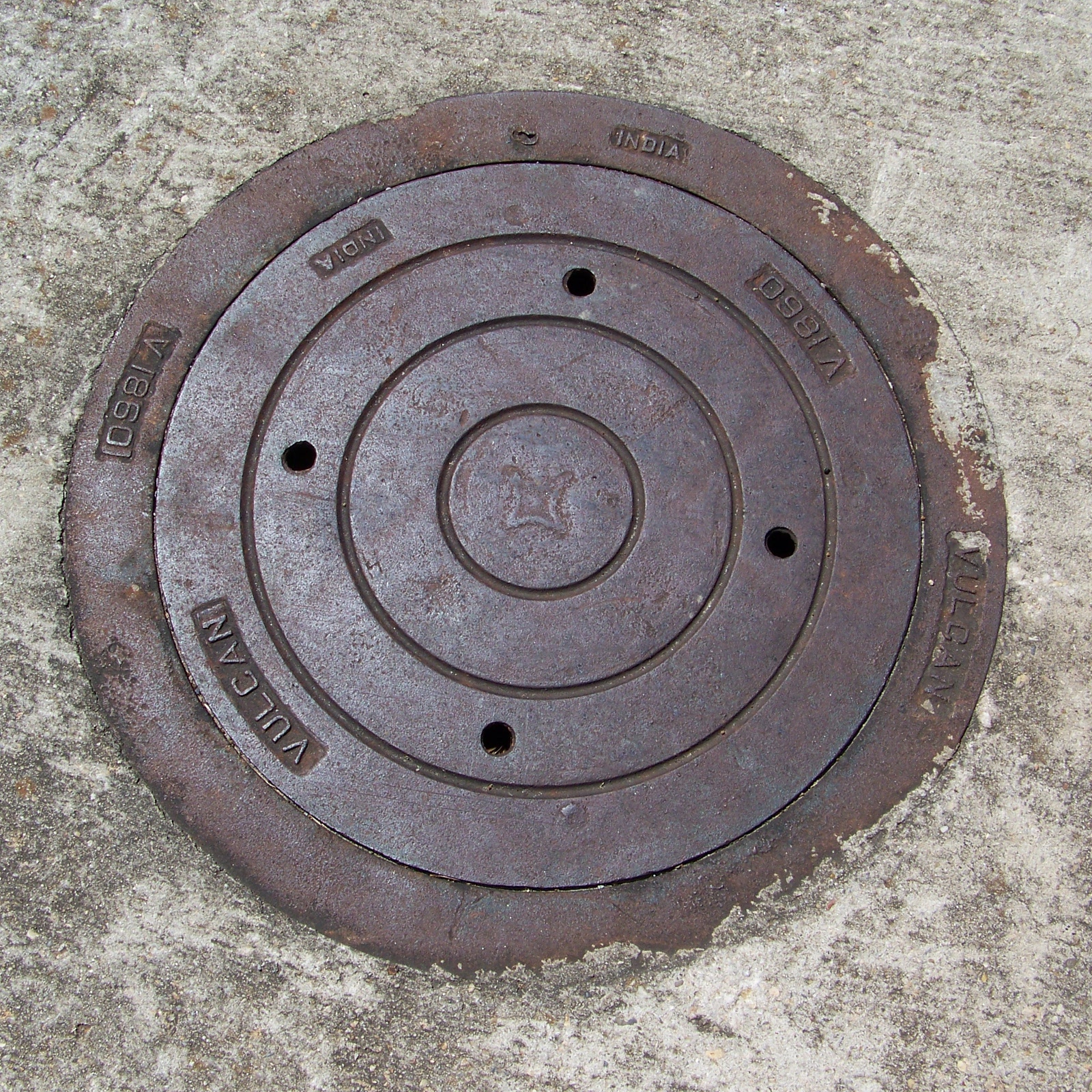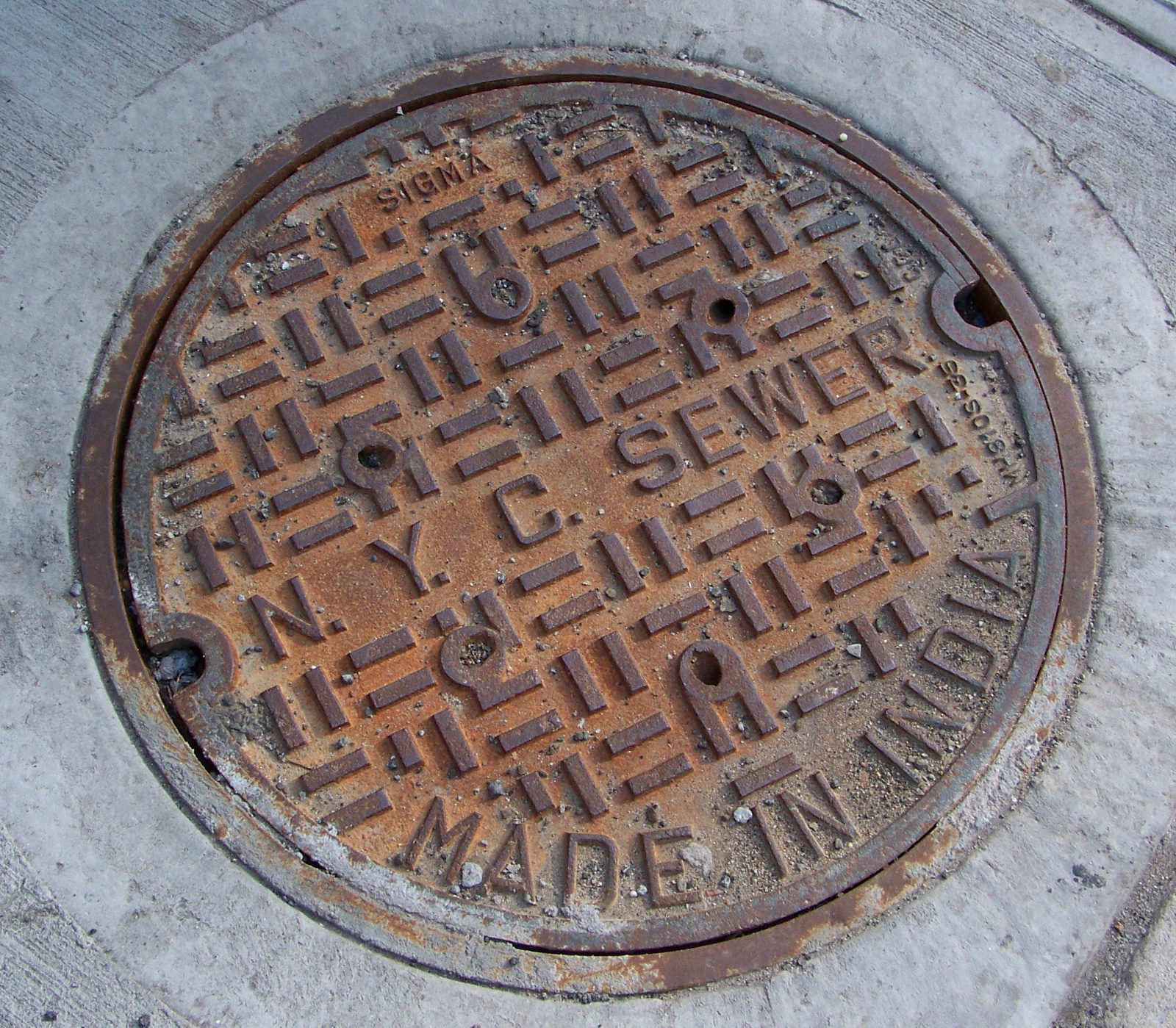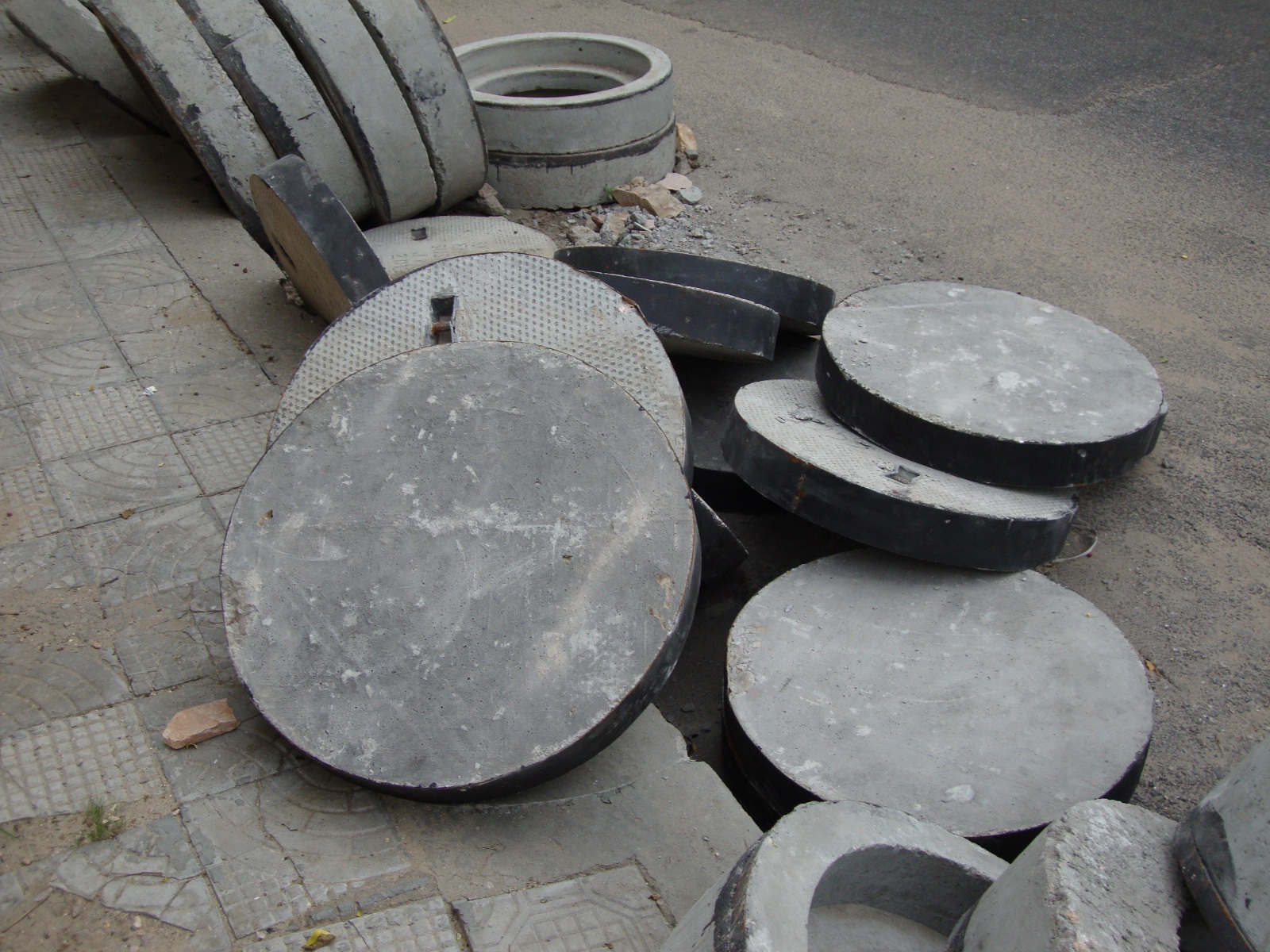If you live in an American city or town, the odds are good that one or more 250-lb pieces of India are not far from where you live or work. Unless you work for a public utility, or have a technical inclination (like me), it is not likely that you would have noticed this imported item. But if you walk around your city and look at the manhole covers, it is almost inevitable that you will come across at least one bearing the words “INDIA” or “MADE IN INDIA.” Almost all of the other manhole covers you are likely to see are from the United States. It makes sense to see American manhole covers in the country where they were made. But what are all of those Indian covers doing here?
The answer to this question lies in decisions made by India’s planners after the country attained independence in 1947. India has a long mettalurgical tradition, but it was not until the early twentieth century that steel manufacturing in India began on a large scale at a plant built on western industrial lines. The first modern steel mill in India was Tata Iron and Steel Company (TISCO) in Jamshedpur, a private undertaking established in 1907. Another private steel plant opened before independence, the Indian Iron and Steel Company (ISCO).
After independence, India’s planners deemed steel a strategic asset that should be under state control. The TISCO and ISCO plants remained under private ownership, but subsequent plants built in the early independence period were public enterprises. A primary motivation for expanding the Indian steel industry was import-substitution. Buying imported steel drained India’s foreign exchange reserves. It would be better, the planners reasoned, to import a mill and then produce steel domestically.
With technical and economic assistance from the Soviet Union, West Germany, and the United Kingdom, the Indian government set up large steel mills in the iron and coal belt of eastern India. The Indian government requested aid from the United States to set up a fourth public-sector mill at Bokaro, but the US Congress opposed loans to a public-sector industry that might compete with private industry. Ultimately, the USSR assisted the construction of the Bokaro plant as well.
With the public-sector mills in operation, India’s steel-producing capacity was vastly expanded, but the original problem of dwindling foreign exchange reserves persisted. The solution was exporting Indian iron and steel products. Manhole covers could be cast cheaply in labor-intensive foundries, and then shipped abroad while still realizing a profit. In this way, an industry that had originally been expanded for the purpose of import-substitution became increasingly oriented toward exports. Indian foundries even make customized covers for large American cities, such as this one in Manhattan:
The irony here is that the high-quality iron manhole covers are produced mainly for export. The municipal corporations of many Indian cities have found it to be much more cost-effective to use reinforced concrete manhole covers.
Links
- Order your own manhole cover from a foundry in Howrah (across the Hooghly River from Kolkata): http://prosperitycastings.com/manhole-cover.html
- A New York Times article about a different foundry in Howrah, which makes some of New York’s manhole covers: http://www.nytimes.com/2007/11/26/nyregion/26manhole.html?_r=0






















